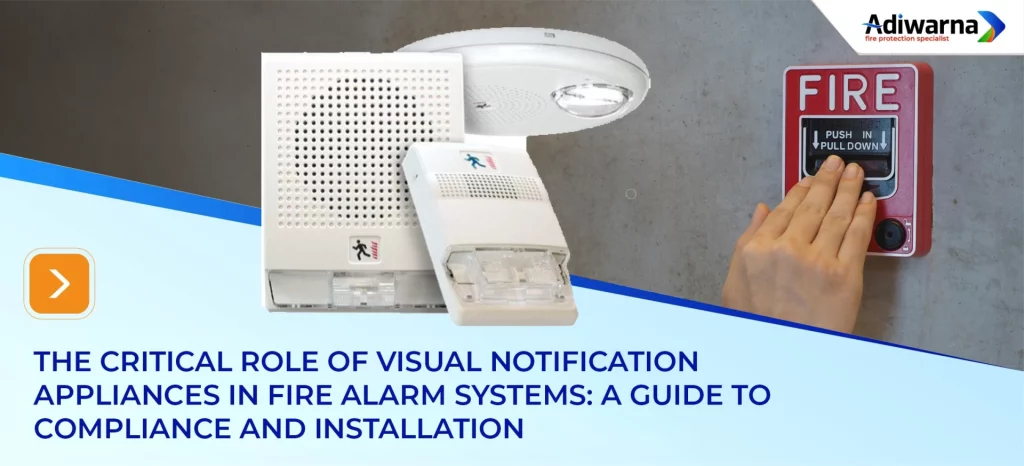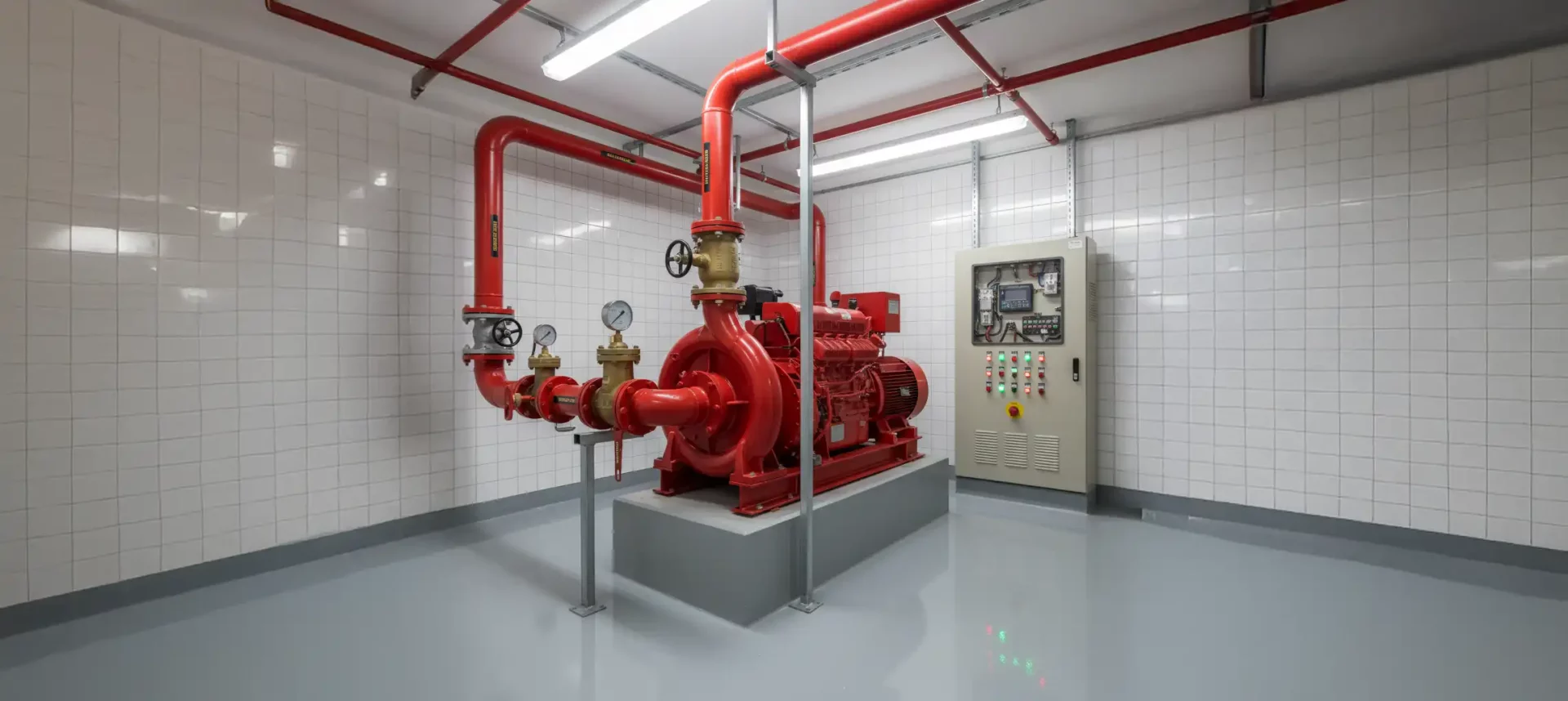In modern building design, life safety hinges on the effectiveness of emergency warning systems. However, the application of visual notification appliances (strobes) is often the most misunderstood element in current fire alarm system installations. These devices must comply with building codes, life safety standards, and federal law, making them a complex subject for system designers and installers.
This article summarizes essential guidelines to ensure your fire alarm system is effective, efficient, and fully compliant with major standards like NFPA 72, ADA, and UL 1971.

1. Visual Notification Appliances: A Life Safety Bridge Amidst Legal Complexity
Visual notification appliances are designed to provide emergency warnings to building occupants who may be unable to hear audible signals, such as individuals with hearing impairments. In the United States, an estimated one in 125 people suffers from severe hearing loss. Moreover, noisy environments, such as factories, warehouses, or nightclubs, can also render audible signals ineffective for any occupant.
The mandate for using visual signals took central stage with the signing of the Americans with Disabilities Act (ADA) in 1990. This act applies to virtually all Commercial Facilities and Public Accommodations, meaning almost every new building or renovation must include strobes if an audible emergency warning system is provided.
Even if your local Authority Having Jurisdiction (AHJ) approves your system, building owners remain vulnerable to federal civil lawsuits for ADA non-compliance, which can result in substantial fines.
2. The Three Pillars of Compliance: Deciphering NFPA 72, ADA, and UL 1971
An effective compliance strategy must align the requirements of the three major standards governing visual notification appliances:
- NFPA 72 (National Fire Alarm and Signaling Code): Governs the application, installation, performance, and maintenance of fire alarm systems.
- ADA (Americans with Disabilities Act): Regulates visual signaling through Accessibility Guidelines (ADAAG) covering strobe placement, spacing, and coverage to ensure accessibility for all occupants.
- UL 1971 (Standard for Signaling Devices for the Hearing Impaired): This is the performance standard that establishes testing criteria for signal strength and frequency, light dispersion, and electrical integrity of the devices.
Strobe Synchronization: A key issue addressed by these standards is the risk of photoepileptic seizures triggered by random light flashes. NFPA 72 addresses this by requiring all strobes within the same field of view to flash concurrently (synchronized), which effectively eliminates the seizure trigger risk. The revised UL 1971 standard, effective November 2000, also tightened synchronization requirements to ensure strobes flash concurrently within 10 milliseconds of each other.
Read: Kidde Optica Smoke Detectors: Smart & False Alarm Proof
3. Placement Precision: Vertical and Horizontal Spacing Rules for Strobe Effectiveness
Proper strobe placement is critical because, unlike audible signals, light cannot penetrate walls or closed doors.
Vertical Placement Visual Notification Appliances
- General Spacing (Non-Sleeping Areas): Both NFPA 72 and ANSI 117.1 mandate a mounting height minimum of 80 inches and a maximum of 96 inches above the floor. This height balances ensuring the device is visible and preventing it from being obscured by furniture or becoming a trip hazard.
Horizontal Placement and Intensity Visual Notification Appliances
- Illumination Goal: The goal of correct placement is to achieve a minimum illumination level of 0.0375 lumens per square foot (lm/ft²) in all indoor areas.
- Corridors (Maximum 20 ft/6 meters wide): Here, a 15 candela (cd) strobe is generally deemed adequate. Devices must be placed a maximum of 15 feet (4.5 meters) from each end of the corridor and separated by a minimum of 50 feet (15 meters) up to a maximum of 100 feet (30 meters) along the corridor.
- Sleeping Areas (Hotel/Dorm Rooms): Require special consideration as they must be able to wake sleeping occupants. Standards mandate a minimum intensity of 110 cd. Additionally, the strobe must be installed within 16 feet (4.88 meters) horizontally from the pillow.
4. The “Equivalent Facilitation” Strategy for Efficient Compliance
One of the most challenging differences is the light intensity requirement. NFPA 72 and ANSI 117.1 require 15 cd for some applications, while the current ADA Guidelines strictly set 75 cd at 50 feet for all applications. Since the most stringent requirement applies, the 75 cd rule must technically be followed.
To combat the high cost and power demand of excessive 75 cd strobes, system designers utilize the “Equivalent Facilitation” principle permitted by the ADA.
- Illumination Alignment: This principle acknowledges that alternative designs, such as using multiple synchronized 15 cd strobes, can provide a level of access and usability that is “substantially equivalent” to the 75 cd requirement. Calculations show that a 15 cd strobe at 20 feet provides slightly greater illumination than a 75 cd strobe at 50 feet.
- Benefits: Using a greater number of lower-intensity, synchronized strobes (e.g., multiple 15 cd) not only mitigates the photoepilepsy risk but also creates equivalent conditions to meet all standards, allowing for significant cost savings on power requirements and component inventory.
5. Selecting Next-Generation Strobes: Power Efficiency and Full Light Quality
Selecting the right strobe requires understanding performance criteria beyond the minimum UL 1971 requirements:
- UL 1971 Listing: Only devices tested and listed to UL 1971 may be used for public mode signaling, as this is the benchmark for performance for devices intended for the hearing impaired.
- Reflector Technology: Advanced strobes are now available with mask and cavity technology, which produce a smooth light distribution across the entire coverage area. This differs from older specular reflector designs that could produce uneven light output patterns and leave blind spots.
- Multi-Candela: Modern strobes often feature multi-candela capability, allowing the installer to select the strobe intensity (e.g., 15/30/75/110 cd) via a switch on the device. This feature reduces inventory needs and increases installation flexibility.
- Current Draw: A critical consideration is low current draw. Highly efficient strobes require smaller system power sources, which can result in lower costs for batteries and power supplies.
Developing a thorough design plan and considering the unique aspects of each building area will ensure your fire alarm system installation provides the best possible life safety protection at the lowest possible cost.







